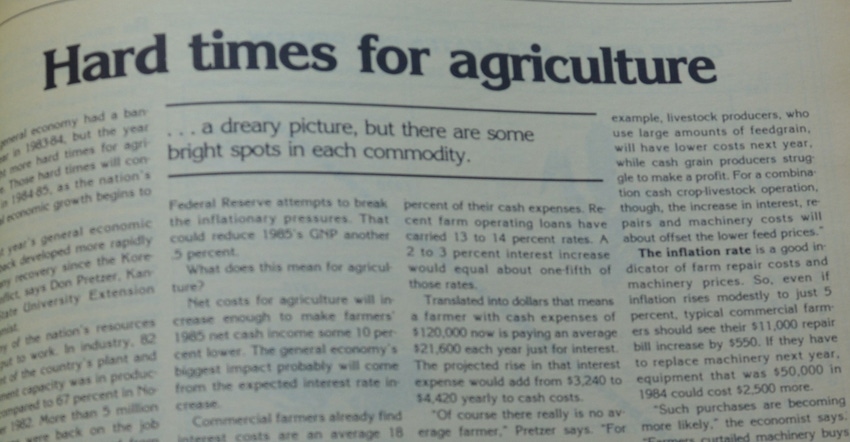September 3, 2019

The general economy was booming in the fall of 1984. Agriculture, not so much. The forecast in the Fall Outlook Report from Kansas State University warned farmers that the bad times were going to continue.
While the year was shaping up to be the best since 1951, with Gross National Product showing 7.2% growth, some slowing was forecast as the Federal Reserve raised interest rates to keep inflation under control.
The result for agriculture was expected to be an increase in net costs, resulting in about a 10% reduction in net income. Commercial farmers were already paying an average of 18% of their cash expenses in interest rates and operating loans were at 13% to 14%.
75 years ago
As the country looked toward the end of World War II in October of 1944, Kansas State University was conducting a survey to determine what Kansas farmers most wanted to buy in the two years following the war.
The survey found farmers wanted things for their homes — carpets for parlors and bedrooms, new floors, roofs, and home repair materials.
Also on the list was farm equipment, cars and airplanes. In all, the survey estimated that farmers would spend about $50 million in the first two years after the war was over.
55 years ago
There was some good news for dairymen in statistics reported in October of 1964. Milk consumption was up by about one quart per person more than the comparative report in 1963. Cheese consumption also hit a new high.
But it was ice cream and frozen milk sales that soared. Ice cream as a dessert for lunch or dinner, or as a bedtime snack, helped to drive sales.
20 years ago
Conservation awareness was increasing rapidly 20 years ago in October of 1999. In the spotlight were conservation practices to improve soil and water quality by using reduced tillage, buffers and filter strips along creeks and streams.
The result of filter strips was a water infiltration rate five times greater than land under cultivation, with 20 feet of grass buffer strip filtering out as much as 80% of sediment and 90% of nitrates.
Goerzen is executive director of the Old Cowtown Museum in Wichita.
About the Author(s)
You May Also Like




